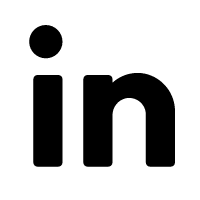Table of Contents
Invar, an iron-nickel alloy known for its extremely low coefficient of thermal expansion, is widely used in applications requiring high dimensional stability. Understanding its cost per kilogram is critical for manufacturers, engineers, and procurement teams. This article explores the cost structure, influencing factors, typical grades, and common industry applications of Invar alloys.

What Is Invar and Why Is It Expensive?
Invar is primarily composed of approximately 64% iron and 36% nickel, and its unique property of near-zero thermal expansion makes it essential in aerospace, scientific instruments, and electronics. The high nickel content is the main reason for its elevated price compared to standard steels. Nickel prices are volatile and driven by market demand, mining limitations, and geopolitical factors.
Average Invar Cost Per Kg in 2025
As of early 2025, the average cost per kilogram of Invar ranges from $80 to $120, depending on the form, purity, and supplier. Prices vary across countries and supply chains.
| Region | Average Cost per Kg (USD) | Common Forms |
| United States | $95 - $115 | Sheet, Bar, Strip |
| Europe | $90 - $110 | Rod, Plate |
| China | $80 - $100 | Foil, Wire |
| Japan | $100 - $120 | Precision Strip |
Factors Affecting Invar Cost per Kilogram
The cost of Invar per kg depends on several core factors, including:
| Factor | Description |
| Nickel Market Price | Nickel accounts for ~36% of the alloy and is the most expensive element. |
| Production Method | Hot rolled and cold rolled forms have different costs. Cold rolled is more expensive due to precision. |
| Material Form | Sheets, rods, and wire have different processing and packaging costs. |
| Country of Origin | Labor and energy costs vary by region, affecting total material price. |
| Order Volume | Bulk orders reduce per-kg cost due to economies of scale. |
| Certifications | Materials with aerospace or medical certifications have higher prices. |
Common Invar Grades and Their Prices
Different grades of Invar serve different applications. Below is a comparison table of commonly used grades:
| Grade | Nickel Content (%) | Typical Use | Price per Kg (USD) |
| Invar 36 | 36 | Aerospace tooling, cryogenic components | $95 - $115 |
| Invar 42 | 42 | Electronic glass sealing, semiconductors | $100 - $120 |
| Super Invar | 31 Ni, 5 Co | Precision instruments, magnetic shields | $110 - $130 |
Applications That Justify the Cost of Invar
Despite the high price, Invar is essential in high-precision industries. Below are sectors that heavily rely on Invar:
| Industry | Component | Why Invar? |
| Aerospace | Satellite frames, tooling jigs | Zero expansion in space environments |
| Electronics | Glass-to-metal seals | Thermal match to glass expansion |
| Medical | Surgical lasers, MRI calibration | Precision and magnetic stability |
| Optical Devices | Telescopes, camera mounts | Maintains shape with temperature changes |
Comparison with Other Alloys
To understand its cost context, here is a cost-per-kg comparison between Invar and similar precision alloys:
| Alloy | Thermal Expansion (ppm/°C) | Price per Kg (USD) | Main Use |
| Invar 36 | 1.2 | $95 - $115 | Precision tooling |
| Kovar | 5.5 | $120 - $140 | Glass sealing |
| Alloy 42 | 5.3 | $90 - $110 | Integrated circuits |
| Stainless Steel 304 | 17.3 | $2 - $3 | General purpose |
How to Reduce Invar Procurement Costs
To optimize your Invar sourcing budget, consider the following strategies:
- Buy in bulk: Larger orders bring down the per-kg price.
- Use domestic suppliers: Minimize logistics and import taxes.
- Request off-cuts or surplus: These are often cheaper than custom cuts.
- Evaluate substitutes: In some non-critical applications, a slightly higher CTE alloy like Alloy 42 may suffice.
Summary of Key Price Data
Here’s a quick reference table summarizing Invar price data:
| Form | Typical Thickness/Size | Average Price (USD/kg) |
| Sheet | 0.2 mm – 3 mm | $95 – $110 |
| Rod | 6 mm – 100 mm diameter | $100 – $115 |
| Wire | 0.1 mm – 5 mm | $105 – $120 |
| Foil | Below 0.1 mm | $110 – $125 |
Where to Buy Invar Alloys
Reliable Invar suppliers include specialty alloy manufacturers and distributors. Some of the top sources are:
- Carpenter Technology (USA): High-quality precision Invar
- Imphy Alloys (France): Original Invar producer
- Hitachi Metals (Japan): Advanced Invar sheets and foils
- Chinese Exporters: Competitive pricing on Invar 36 and 42
Related Questions
What is the current market price of Invar per kg?
In 2025, the market price of Invar per kg ranges from $80 to $120 depending on the form, grade, and supplier location.
Why is Invar so expensive?
Invar is expensive due to its high nickel content (~36%), precision manufacturing processes, and limited production sources worldwide.
What is the difference between Invar 36 and Super Invar?
Invar 36 contains about 36% nickel and is used for general low expansion needs. Super Invar includes cobalt for even lower thermal expansion and is used in extremely sensitive instruments.






